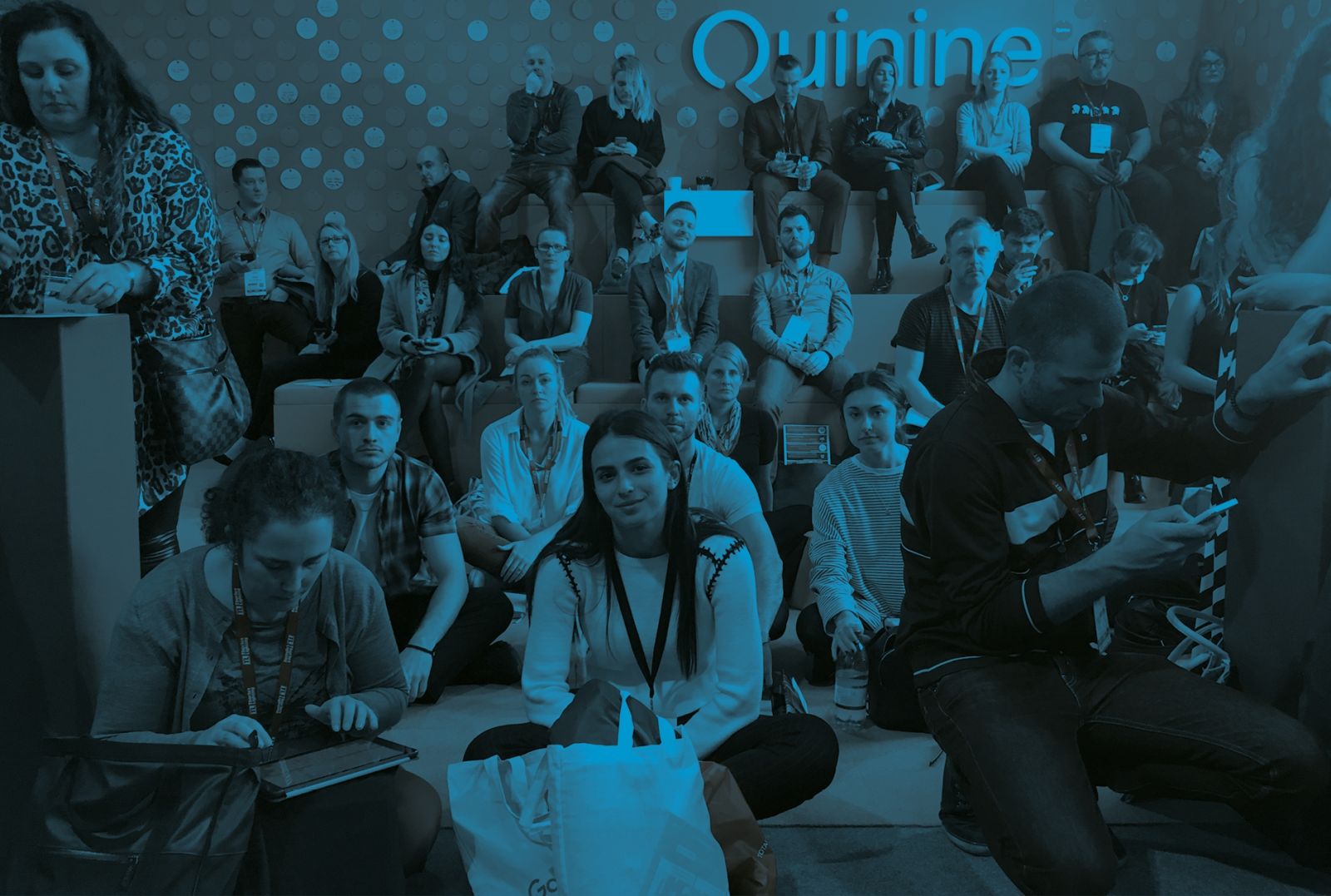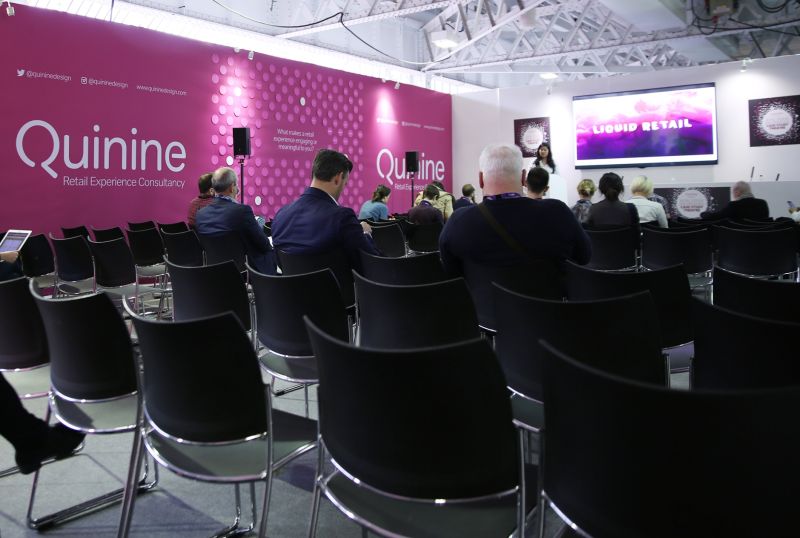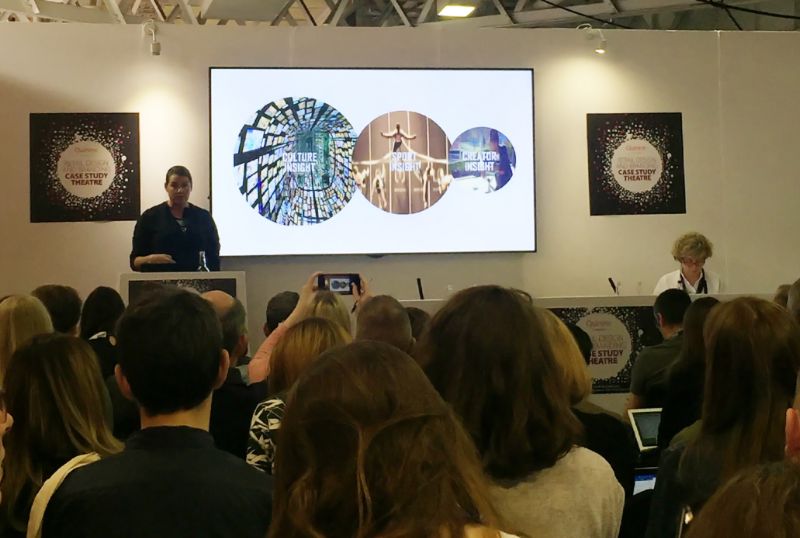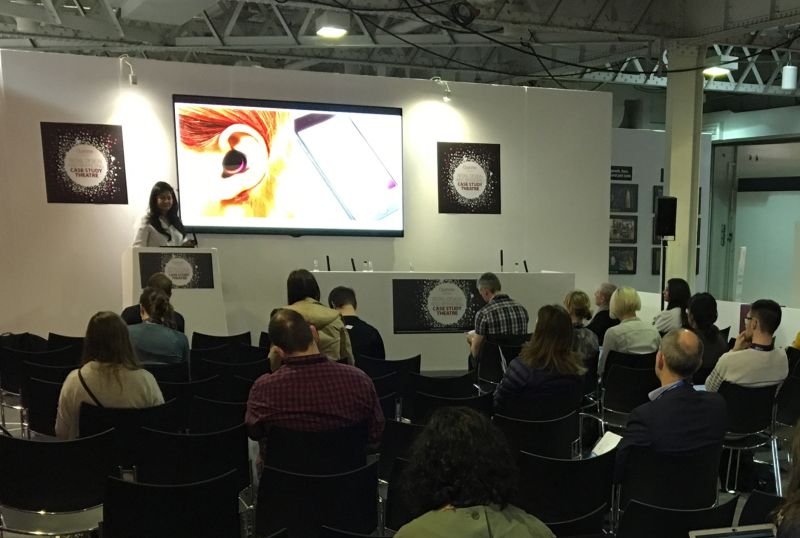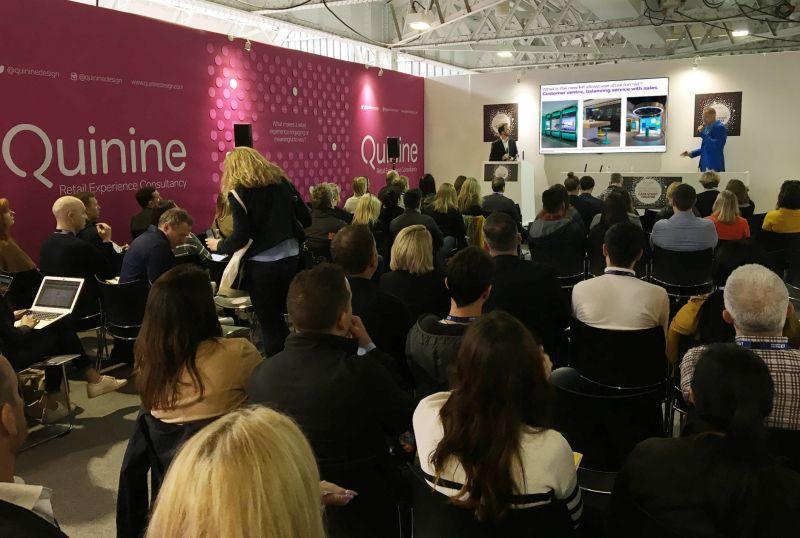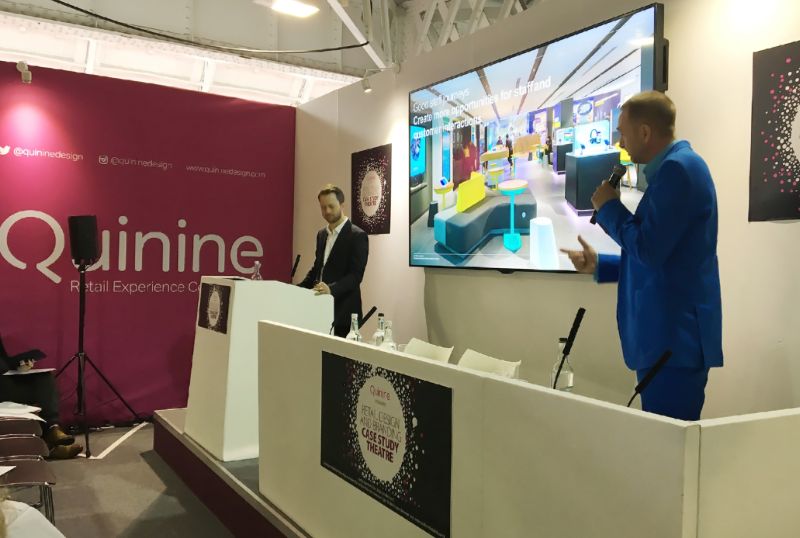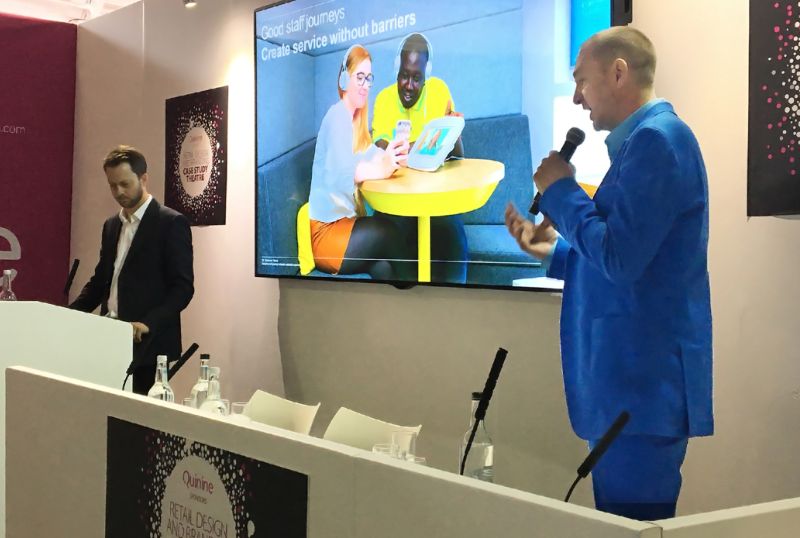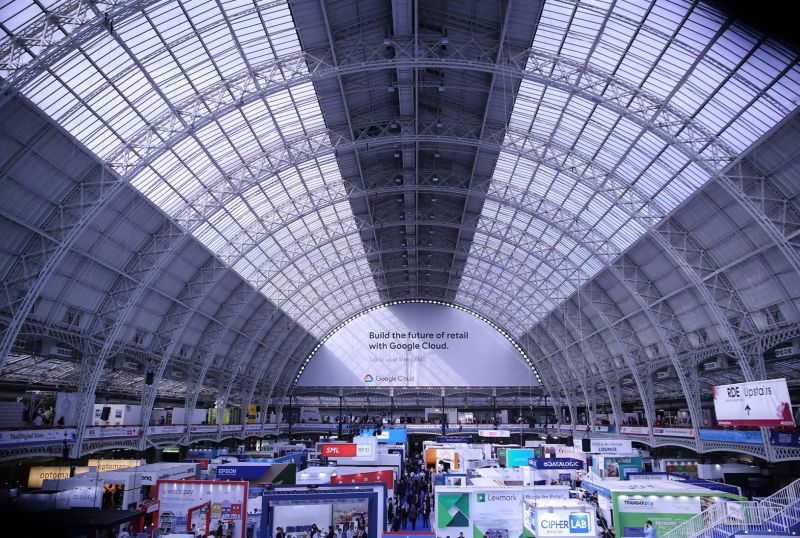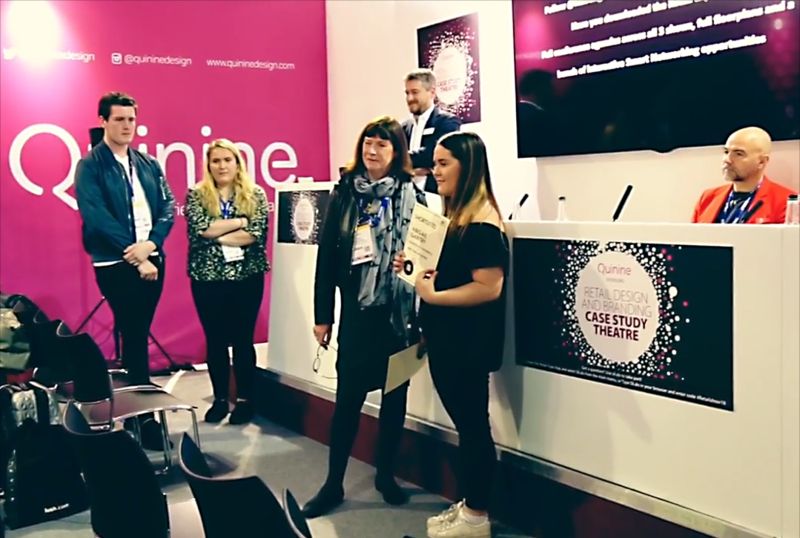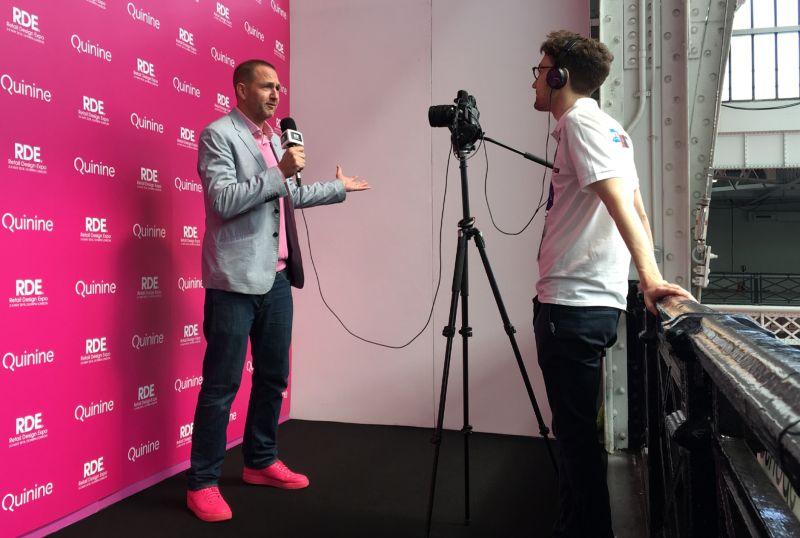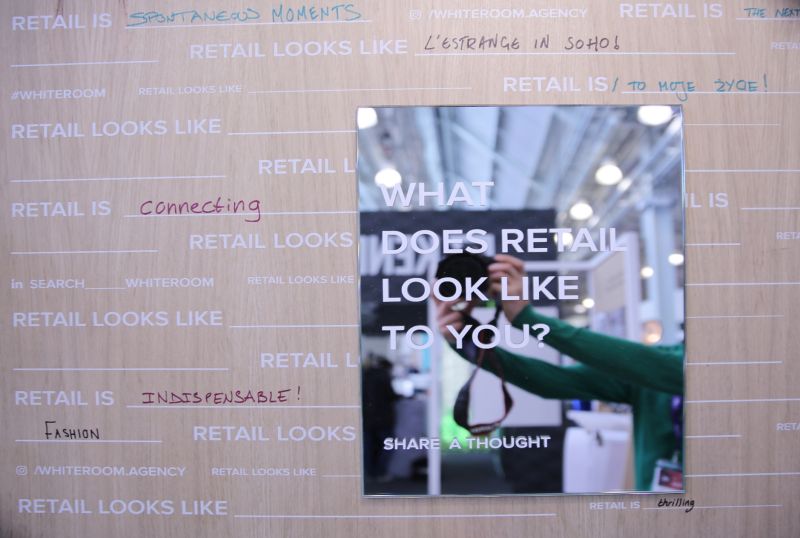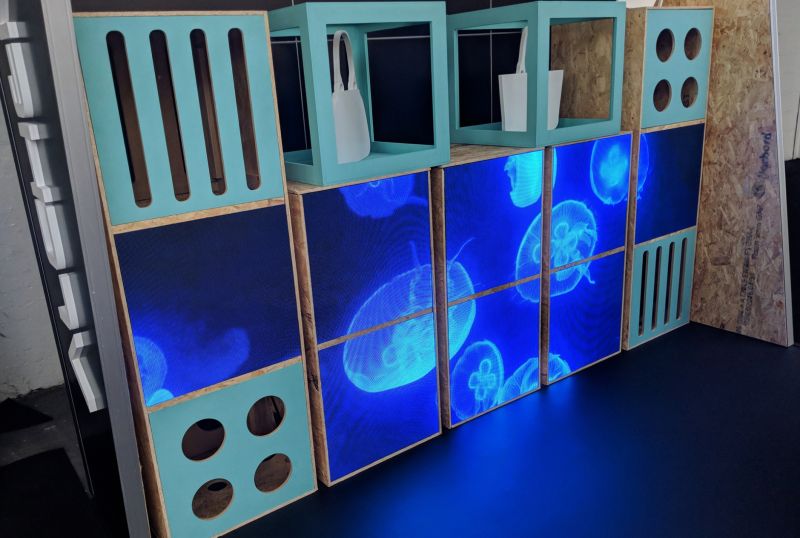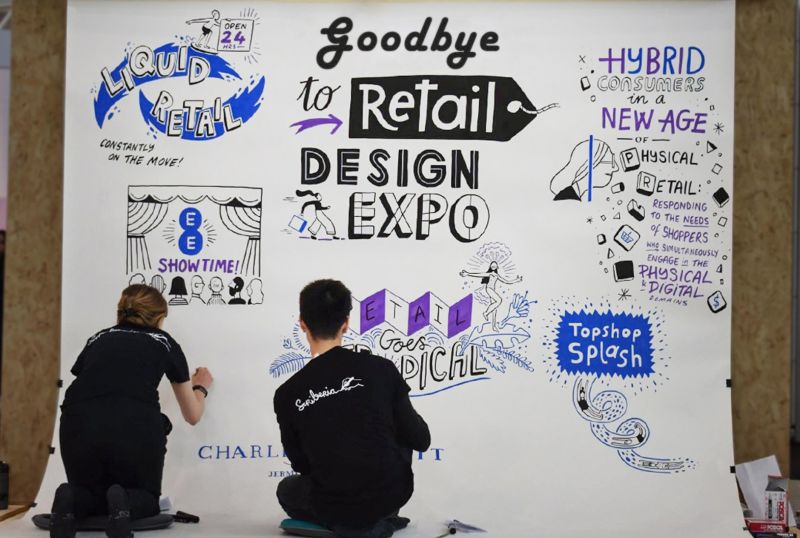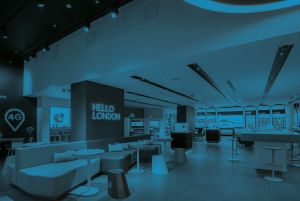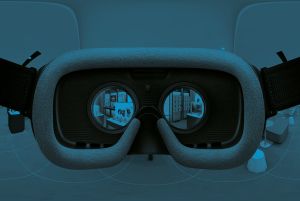Insights from the Design and Branding Case Study Theatre
During Retail Design Expo 2018, the Design & Branding Theatre hosted a series of case-study presentations and panel discussions. Companies including EE, Stylus and Adidas took part, and expert speakers from clients and agencies came together to share their experiences and insights on recent projects.
This was our second year of involvement with the Design and Branding Theatre at RDE. We attracted over 600 visitors, with 15 presentations and panel discussions held over two days. The following ten themes (we’re not too keen on top-ten lists, but it just so happened that ten themes emerged) captured the prevailing mood and sentiment, as well as the emerging dominance of experiential retail trends.
The rise of face-to-face retail There’s a growing demand for knowledgeable, empathetic customer service in store. With more customers heading into store to interact with staff face to face, retailers are looking at how retail environments can empower and inspire staff to create better in-store customer experiences.
The need for engaging experiences Physical
stores can no longer survive on just day trading. We need to define
shopping in a new way. How do we entertain the customer? How do we
inform? How do we stimulate and create curiosity? The speed of change
and rising complexity of operations means retailers need to be flexible,
brave to meet the expectations of the consumer.
Our webinar
series 'What is Experiential Retail?' explores what 'experience' means
in physical retail today. Details of full series can be found here:
Do fewer things better Retailers must focus on getting basics right first, before developing immersive or interactive in-store experiences. The in-store experience must balance the practical with the emotional, with the functional side of things well-tuned and in full working order.
Customers are more than the products they buy Customers are hungry to be connected on a more emotional level, fed by a need to share on social media. Creating this deeper, more consequential connection leads to greater levels of brand loyalty.
The new ROI, Return of Involvement As we move from transactional to experiential activities, the way we determine business success needs to change. Measuring behaviour and emotional connections, rather than clear-cut return on investment will not be easy. New measurement criteria, which take in the whole customer journey, will need to be explored.
Connecting online with in-store The digital
and mobile revolution shows no sign of slowing down. As a way of
refocusing on human interactions, retailers are looking to combine
online and in store experiences in a unified digital and physical
experience, that fits with the ‘everywhere brand’.
Shop local Increasingly, the ‘local’ experience is being recognised as unique, personalised and relevant. Location is becoming more valuable to people, as they realise the benefits of shopping locally to help revitalise their neighbourhoods and build a feeling of community.
Social context With so many places to eat and drink and new ideas filtering into traditional retail, customers now expect a social context to be woven into everyday shopping. Retail destinations, high-streets, shopping centres and even city districts should all be exploring experiential retail trends to provide layered experiences, with public and private spaces that entertain, educate and encourage sociability.
Community connects you to customers By creating places that bring people together, brands can connect to their communities. Dynamic, interactive environments that invite audience participation and collaboration can play their own part in defining a brand’s future direction.
Place-making involves shaping spaces for people Although designers have been championing curated, well-designed environments as a way to differentiate brands for a long time, increasing consumer expectations have placed even more importance on the physical environment. A well-designed store can simplify operations, nurture job satisfaction, increase customer loyalty and connect the customers to brand values.
With these ten clear themes emerging, it’s apparent there are many similar challenges running through a wide variety of retail projects. Some of these themes (‘Create engaging experiences’, and ‘Social context’) are now movements that are gaining momentum and clearly not going away. Retailers should take note of such emerging experiential retail trends and react now if they haven’t already.
New and emerging experiential retail trends represent an encouraging level of development and innovation from the retail industry in their attempts to meet the changing customer expectations.
Please get in touch if you have any questions, or would like to discuss how the themes raised at RDE 2018 affect your business or brand. If you are interested in discussing the key experiential retail trends and insights, please attend one of our webinars or sign up to our newsletter.
